US ranchers whiplashed by Trump’s beef policies

It has been a whiplash-inducing month for the American rancher, one of United States President Donald Trump’s most steadfast voting blocs. Starting with an October 19 quip from Trump that the US would increase beef imports from Argentina to the ensuing rancher backlash against the announcement of an investigation into the hyperconsolidated US meatpacking industry and the dropping of tariffs on Brazilian beef, ranchers have found themselves caught between the president’s desires to appease both them and the American consumer in the face of high beef prices. Recommended Stories list of 4 itemsend of list US ranchers have enjoyed rising cattle prices, largely the result of the lowest herd numbers for beef cattle since the 1950s. Other factors constricting supply include the closure of the Mexican border to live cattle due to concerns over screwworm and steep tariffs on foreign beef. Cattle prices paid to ranchers are separate from consumer beef prices, which, as of September, were $6.32 for a pound (453 grams) of ground beef, an 11 percent rise from September 2024 when they were $5.67 a pound. The Bureau of Labor Statistics did not release economic data, including the consumer price index for last month, because of the government shutdown. Trump had no patience for the typically loyal ranchers objecting to his plan to import more Argentinian beef, which they saw as a threat to their recent economic gains. “If it weren’t for me, they would be doing just as they’ve done for the past 20 years – Terrible! It would be nice if they would understand that,” Trump wrote in an October post on his Truth Social platform. Advertisement While Corbitt Wall, a commercial cattle manager and market analyst, is clear that he “totally supports Trump and everything he does”, he also saw hubris and a misunderstanding of the cattle industry by the president. “There was not a person in the cattle business on any level that was not insulted by that post,” he told Al Jazeera. Wall religiously follows prices across the cattle trade from ranch to slaughterhouse and has watched the futures market for cattle slide down by more than 15 percent since Trump’s October 21 announcement. Futures prices dictate what ranchers can expect to sell cattle for down the line and sway current sale prices as well. For ranchers’ sake, Wall said he hopes Trump leaves the cattle market alone. “He doesn’t live in this world, in this cattle world, and doesn’t realise the impact that a statement can make in our business,” Wall said. Years of rough seasons Oregon rancher David Packham said that while cattle prices have jumped in ranchers’ favour, many are still struggling in the face of years of rough seasons. Years of drought across the country raised feed costs for all and pushed some ranchers to sell off cattle. Sticker prices on farm equipment from tractors to pick-up trucks have ballooned as well, especially on the back of supply chain challenges during the COVID-19 pandemic, and are expected to rise further on account of Trump’s tariffs. Packham said he has regularly sold cattle at a loss and doesn’t want consumers to think ranchers are living high off the hog. “I’m looking at a 40-year-old tractor that I use on a daily basis just to keep putting off replacing it, making repairs, although it’s difficult to find parts for now, just to keep it limping along because I couldn’t afford $100,000 for a new tractor,” Packham said. “When I say we’re not really making a whole lot of money, it’s because we have all this loss carryover.” Cattle are sold at Nevada Livestock Marketing in Fallon, Nevada [Courtesy of Corbitt Wall] Packham was a registered Republican until Trump’s first term. The president’s Argentina comments and the subsequent chaos for the cattle industry have propped open a door for ranchers critical of Trump, but they represent a minority within the community, he said. “I’m noticing more and more of them [ranchers] that had been cautiously neutral, that are now kind of like me and just saying, ‘You know what? No. This is bulls***. He’s a train wreck,’” Packham said. ‘Perennial issue’ One action ranchers can support, however, is Trump’s November 7 announcement of a Department of Justice investigation into the big four US meatpackers – Tyson, JBS, Cargill and National Beef – “for potential collusion, price fixing and price manipulation”. Advertisement Historically, ranchers looking to sell cattle have held little negotiating power as the four companies control more than 80 percent of the market. However, a prior Department of Justice investigation into meatpacker price-fixing was started under the first Trump administration in 2020 due to a gulf created by falling cattle prices and rising consumer beef prices. The investigation continued under President Joe Biden’s administration but was never publicly concluded. According to Bloomberg News, the investigation was quietly closed with no findings just weeks before Trump announced the November antitrust probe. James MacDonald, a research professor in agricultural and resource economics at the University of Maryland, views the administration’s antitrust investigation announcement as “entirely for political consumption”. “It is a perennial issue that p***es off ranchers, and you can gain some political ground by attacking the packers,” MacDonald said. Packham would prefer the new investigation to come at a different time and said that given the squeeze from the tight cattle market, packers are operating under slimmer margins and not from a position of absolute power. On Friday, Tyson announced the closure of a Nebraska beef-processing plant that employed more than 3,000 people. MacDonald called the decision a “shock” indicative of the depths of the US beef shortage. The current low cattle inventory in the US came from years of drought, which wiped out grazing lands and slowed herd rebuilding. Replenishing the cattle supply chain is a years-long process. “That’s sort of a fact and a fundamental, and it’s not going to change for a while,” MacDonald said. MacDonald also doesn’t believe the increased Argentina imports will ease this shortage
India, Pakistan to play T20 World Cup 2026 group match on February 15
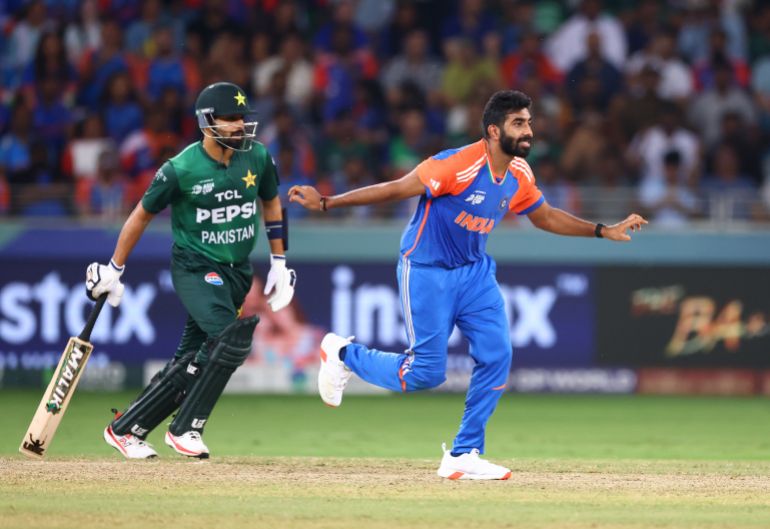
Bitter rivals India and Pakistan will face off in Group A at next year’s 20-team competition. By News Agencies Published On 25 Nov 202525 Nov 2025 Click here to share on social media share2 Share Archrivals India and Pakistan will clash in a politically-charged Twenty20 World Cup match in Colombo on February 15, the International Cricket Council (ICC) said as it announced the draw on Tuesday. The 20-team tournament will be played across eight venues – five in India and three in Sri Lanka – between February 7 and March 8, the ICC said in a statement. Recommended Stories list of 3 itemsend of list Pakistan will play all their games in Sri Lanka because of their soured political relations with India. The March 8 final is scheduled for the western Indian city of Ahmedabad but would be moved to Colombo if Pakistan reach it. A military conflict between the nuclear-armed neighbours in May overshadowed the subsequent Asia Cup 2025 in which India refused to accept the winners’ trophy from Asian Cricket Council chief Mohsin Naqvi, who is Pakistan’s interior minister. The teams in the tournament have been divided into five groups of four, with the top two advancing to the Super Eight phase. The top four in that will qualify for the semifinals. Defending champions India will begin their Group A campaign against the United States in Mumbai on February 7. Sri Lanka and Australia are in Group B, which also includes Ireland, Zimbabwe and Oman. England and West Indies, both twice winners, will face first-timers Italy and Asian sides Bangladesh and Nepal in Group C. New Zealand, South Africa, Afghanistan, Canada and the United Arab Emirates make up Group D. Jasprit Bumrah, right, will spearhead the Indian bowling attack at the T20 World Cup 2026, to be staged in India and Sri Lanka [File: Francois Nel/Getty Images] Adblock test (Why?)
UN calls for probe into Israel’s strikes on Lebanon
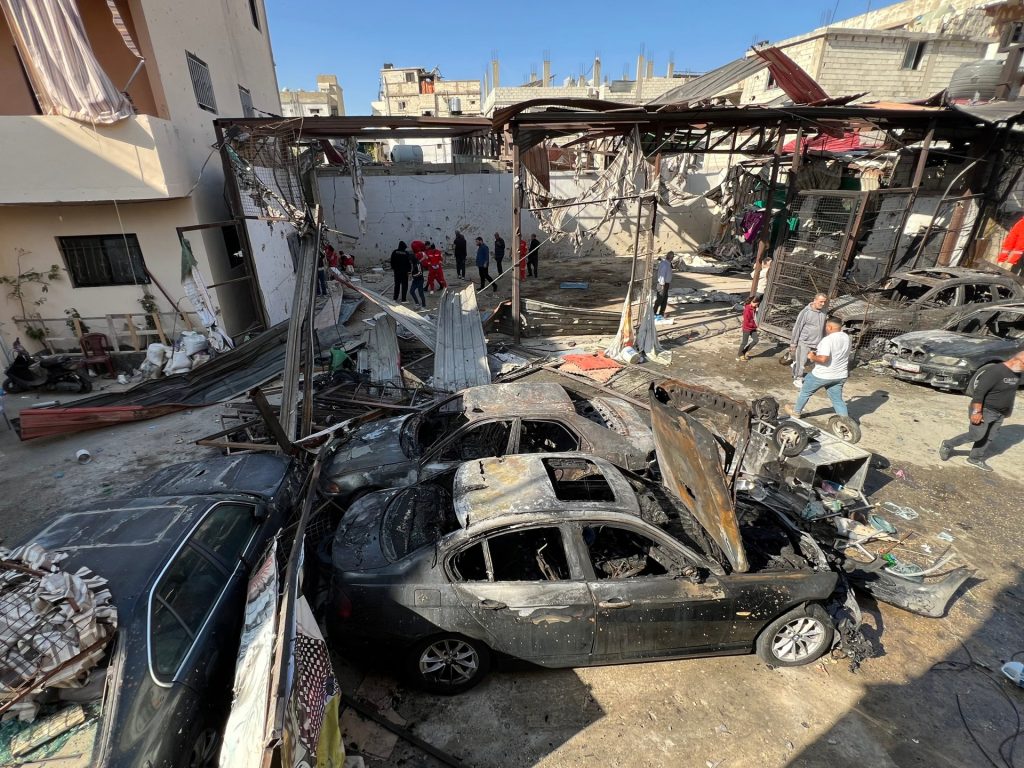
The UN human rights office has urged a “prompt and impartial” investigation into Israeli strikes in Lebanon, warning of possible violations of international humanitarian law nearly a year after a ceasefire was signed. Thameen Al-Kheetan, spokesperson for the UN High Commissioner for Human Rights, cited an attack last week on the Ein el-Hilweh refugee camp that killed 11 children. Recommended Stories list of 4 itemsend of list He said in a statement on Tuesday that all of those killed in the Ein el-Hilweh strike were civilians, raising “serious concerns that the Israeli military’s attack may have violated international humanitarian law principles on the conduct of hostilities”. Israel has killed more than 300 people in Lebanon since the November 27, 2024, ceasefire, including about 127 civilians, according to the UN. Israeli forces remain deployed in five areas of southern Lebanon and continue near-daily air raids, which Israel claims target fighters from the Lebanese armed group Hezbollah and its infrastructure. Al-Kheetan described last week’s strike on Ein el-Hilweh, near Sidon, as one of the deadliest since the ceasefire. “At least 13 civilians, including 11 children, were killed and at least six civilians injured last week in an Israeli strike on the Ein El-Hilweh camp,” he said. “There must be prompt and impartial investigations … those responsible must be brought to justice.” He said Israeli attacks have also hit homes, roads, factories and construction sites, hampering reconstruction in the south and preventing families from returning. He cited a November 16 strike on a cement and asphalt factory in Ansar, which destroyed dozens of concrete mixers, cranes and fuel tanks. Advertisement More than 64,000 people, mostly from southern Lebanon, remain displaced, according to the UN. Al-Kheetan said Israel had begun constructing a wall that crosses into Lebanese territory, rendering 4,000 square metres (43,055sq feet) inaccessible and undermining displaced people’s right of return. “All those internally displaced must be able to go back to their homes, and reconstruction should be supported, not tampered with,” he said. Escalation in Beirut The warning comes amid heightened tension after an Israeli strike in Beirut on Sunday killed a senior Hezbollah commander. Hezbollah said its chief of staff, Haytham Ali Tabtabai, was among five people killed and 28 injured in the attack in Dahiyeh. Experts say the attack marks a major escalation after Lebanon’s capital was struck for the first time in months, and days after Lebanon’s president announced that the country had agreed to talks following pressure from Israel and the United States to accelerate efforts to disarm Hezbollah. Hezbollah was severely weakened after an Israeli escalation in September 2024 that killed its longtime leader Hassan Nasrallah and other senior officials. Since the November ceasefire, the group has responded to Israeli attacks only once. Al-Kheetan has urged “all parties” to observe the ceasefire “in good faith”. “A genuine path towards a permanent cessation of hostilities is the only way to protect the human rights of civilians on both sides from the devastating effects of new hostilities. Accountability for violations of international human rights law and international humanitarian law must be realised,” he added. Meanwhile, Israel continues its genocidal war against the Palestinian people in Gaza despite a US-brokered ceasefire between Israel and Hamas, killing more than 300 people since the truce took effect in early October. At least 69,733 people have been killed in Israel’s genocidal war on Gaza since October 2023. Israel launched the genocidal war on Gaza after the Palestinian armed group Hamas led an attack on southern Israel on October 7, 2023, killing at least 1,129 people and seizing more than 200 others as captives. Hezbollah started firing rockets into Israel on October 8, 2023, in what it said was an act of solidarity with the Palestinian people in Gaza, beginning more than a year of escalating hostilities with Israel as the two sides frequently exchanged attacks across the border. Adblock test (Why?)
US-backed GHF ‘aid mission’ in Gaza ends – a timeline of violence
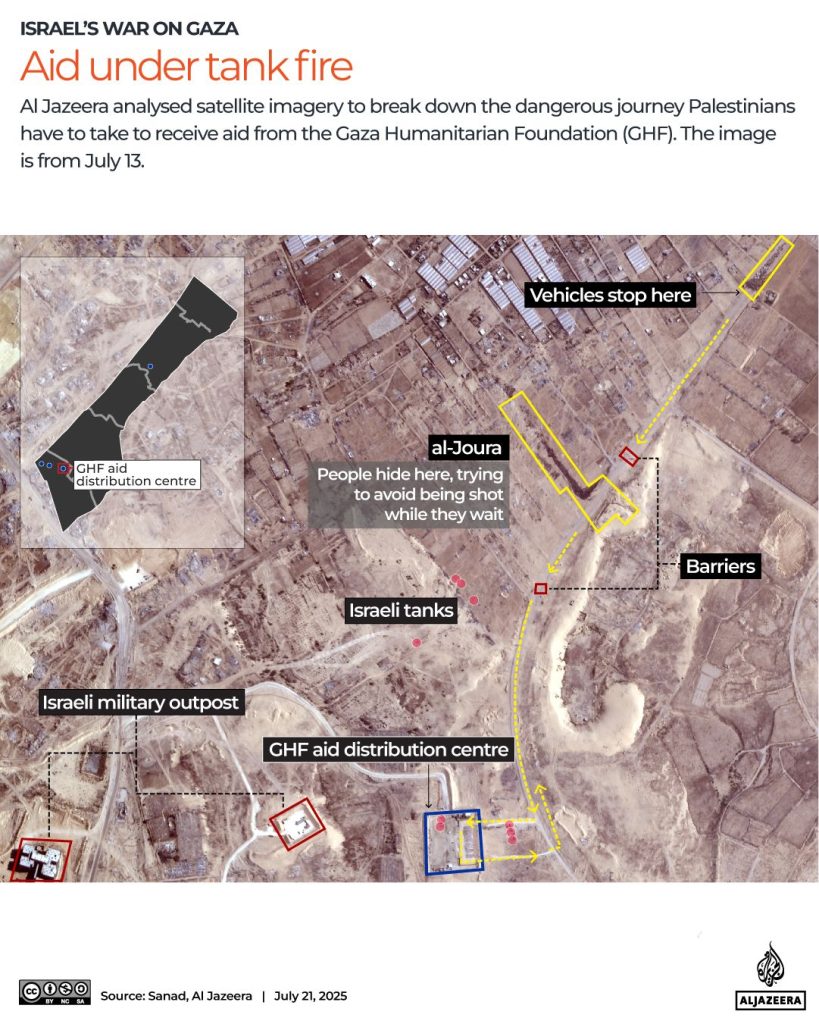
The Gaza Humanitarian Foundation (GHF), backed by the US and Israel to oversee the distribution of aid in Gaza, has announced it is ending its controversial “mission” and is closing aid distribution sites following a US-brokered ceasefire agreement. Under increasing international pressure to allow aid into the besieged Gaza Strip earlier this year, Israel and the US backed the GHF as an independent agency to administer aid. Israel completely blocked aid to the Strip from March this year, claiming that Hamas was stealing aid provided by the UN agency for Palestinian refugees, UNRWA. Israel did not provide any evidence for this and also blocked UNRWA workers from entering the Strip from February. Recommended Stories list of 3 itemsend of list While the UNRWA network operated about 400 sites across the Strip before that, the GHF, guarded by armed US private security contractors, set up only four “mega-sites” – three in southern Gaza and one near Gaza City – to distribute food and other aid to Gaza’s population of about two million Palestinians. Furthermore, since the organisation began operations in Gaza in May, Israeli forces and some US contractors have routinely opened fire on Palestinians arriving to receive aid. Disorganisation around the sites has caused large crowds to gather, and some people have suffocated or died in stampedes. While GHF Executive Director John Acree said in a statement on Monday that the organisation delivered the “only aid operation that reliably and safely provided free meals directly to Palestinian people in Gaza”, more than 2,000 aid seekers have been crushed to death or killed by gunfire, according to UN figures. Advertisement Here is how the GHF “mission” to Gaza unfolded this year: May 26 – GHF issues a statement announcing it will begin direct aid delivery inside the battered enclave, hours after its executive director, Jake Wood, resigned, citing concerns about the agency’s independence. The UN and other aid agencies refuse to work with GHF, warning that requiring Palestinians to gather at a few centralised aid points would put people at risk and undermine other aid efforts. May 27 – GHF begins operating in Gaza. Israeli forces open fire on thousands of Palestinians attempting to receive food in southern Gaza’s Rafah area, killing at least 10 people and injuring dozens. Aid seekers are forced to clamber over fences and push through packed crowds to reach life-saving supplies. UN spokesperson Stephane Dujarric says seeing thousands of Palestinians storming the aid site is “heartbreaking” as the chaos underscores the staggering level of hunger gripping Gaza. Gaza’s Government Media Office calls the incident a “deliberate massacre and a full-fledged war crime.” May 29 – Israeli forces open fire at an aid point in southern Gaza, killing 10 people and injuring dozens. Shortly after, multiple explosions are reported near another aid centre on the Netzarim Corridor, which divides northern Gaza from the rest of the Strip. It is not clear what caused the blasts, and there are no reports of casualties. May 30 – Israeli forces open fire on civilians waiting to collect food at a GHF distribution point on Salah al-Din Street in central Gaza, wounding at least 20 people. June 1 – Israeli tanks kill at least 32 Palestinians waiting to get food at two aid distribution sites in Gaza, leaving more than 200 others injured. June 3 – UN Secretary-General Antonio Guterres says the killing and injuring of Palestinian aid seekers is “unacceptable” and calls for an independent investigation after Israeli forces open fire close to an aid distribution site in Rafah. Gaza’s Health Ministry says at least 27 Palestinians have been killed in the incident and 90 injured. June 8 – At least 13 Palestinians are killed, and more than 150 are injured when Israeli troops and US security contractors open fire on crowds waiting for food near two aid distribution sites in Gaza, one east of Rafah and another near the Wadi Gaza Bridge. Gaza’s Government Media Office accuses Israel of turning distribution sites into “human slaughterhouses”. July 16 – At least 21 Palestinians are killed at a GHF aid distribution centre in southern Gaza. Witness accounts say Israeli forces opened fire on the crowd, causing a stampede. At least 15 people died of suffocation, while others were shot. Twenty-four-year-old Mohammed Abedin, who survived the incident, told Al Jazeera that they were “shot at like animals”. Advertisement July 22 – The United Nations says the number of Palestinians killed while trying to access food in Gaza from GHF distribution points has topped 1,000. [Al Jazeera] August 1 – A former contractor for GHF, Anthony Aguilar, tells Al Jazeera about what he describes as the deadly and unprofessional practices he witnessed firsthand at aid distribution sites in Gaza. This includes firing what the organisation described as “warning shots” on an unarmed population using heavy artillery. “They call that warning shots, I call it a war crime,” he said. August 2 – At least 38 Palestinians seeking aid at distribution sites operated by GHF are killed, despite Israel announcing on July 27 it would begin implementing “tactical pauses” in fighting in some areas to allow Palestinians greater access to humanitarian aid. August 5 – Twenty-eight UN experts call for GHF’s dismantlement, describing it as an “utterly disturbing example” of aid exploitation for military purposes. August 9 – Israel allows some aid to be airdropped into Gaza by several countries, including Germany, Belgium and Jordan, amid global outrage, but a 15-year-old Palestinian boy is crushed to death by a falling pallet during an airdrop near the so-called Netzarim Corridor in central Gaza. September 4 – The Office of the United Nations High Commissioner for Human Rights (OHCHR) says it has recorded more than 2,146 deaths in the vicinity of sites run by GHF and along aid convoy routes. October 12 – GHF confirms it has suspended operations following the announcement of a US-brokered ceasefire between Israel and Hamas, which came into effect on October 10. November 10 – A documentary, Breaking Ranks: Inside Israel’s
Trump launches ‘Genesis Mission’ to harness AI for scientific breakthroughs
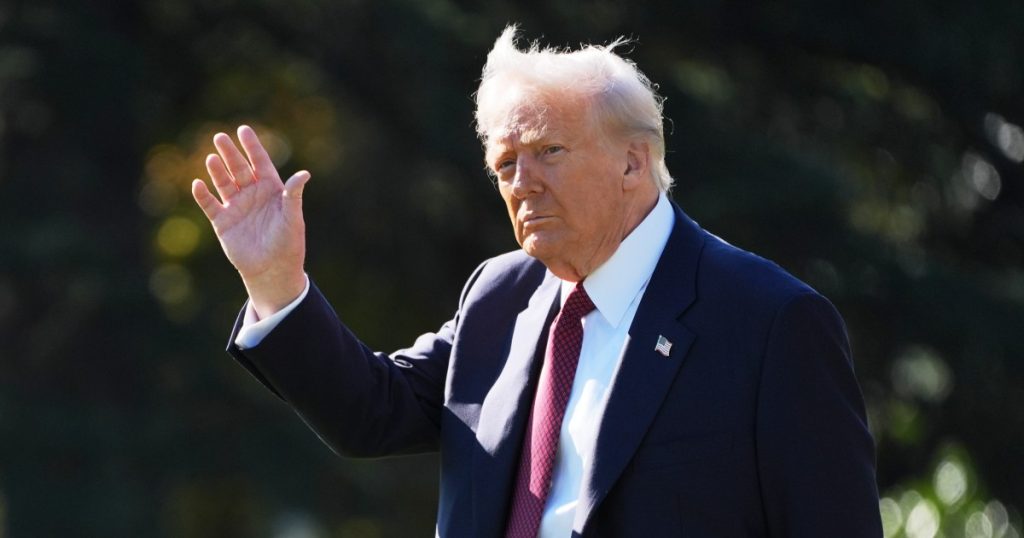
Trump signs order to integrate supercomputers and data assets in order to create ‘AI experimentation platform”. United States President Donald Trump has unveiled a national initiative to mobilise artificial intelligence (AI) for accelerating scientific breakthroughs. Trump signed an executive order on Monday to establish “The Genesis Mission”, the latest iteration of his administration’s aggressive strategy for spurring AI development through deregulation, infrastructure investment and public-private collaboration. Recommended Stories list of 4 itemsend of list Trump’s order directs US Energy Secretary Chris Wright to unite scientists and technologies at the country’s 17 national laboratories into “one cooperative system for research”. Under the initiative, US supercomputers and data resources will be integrated to create a “closed-loop AI experimentation platform”, according to the order. The White House, which likened the initiative to the Apollo programme that put the first man on the moon, said priority areas of focus would include the “greatest scientific challenges of our time,” such as nuclear fusion, semiconductors, critical materials and space exploration. Michael Kratsios, the White House’s top science adviser, said the initiative took a “revolutionary approach” to scientific research. “The Genesis Mission connects world-class scientific data with the most advanced American AI to unlock breakthroughs in medicine, energy, materials science, and beyond,” Kratsios said. Chipmaker Nvidia and AI startup Anthropic said on Monday that they were partnering with the Trump administration on the initiative. “Uniting the National Labs, USG, industry, and academia, this effort will connect America’s leading supercomputers, AI systems, and next-generation quantum machines into the most complex scientific instrument ever built – accelerating breakthroughs in energy, discovery, and national security,” Nvidia said in a social media post, referring to the US government (USG). Advertisement Since re-entering the White House, Trump has made cutting red tape to fast-track the development of AI a key plank of his economic agenda. Last week, Trump called on the US Congress to pass legislation to create a national standard for AI, while criticising state governments over their laws regulating the emerging technology. “Overregulation by the States is threatening to undermine this Growth Engine,” Trump said on his platform, Truth Social. “We MUST have one Federal Standard instead of a patchwork of 50 State Regulatory Regimes.” Benjamin H. Bratton, an AI expert at the University of California, San Diego, welcomed the initiative as a move toward the “diffusion” of the technology. “It is less important ‘whose’ AI people have access to than they have universal access at all,” Bratton told Al Jazeera. “Most attempts to throttle AI in the USA and EU come from cultural, economic and political incumbents protecting their turf.” “Those locked out of positions of artificially scarce social agency have the most to gain,” Bratton added. “I support diffusion, not any particular administration.” Adblock test (Why?)
Viola Ford Fletcher, survivor of 1921 Tulsa Massacre, dies age 111

Fletcher fought for greater recognition of one of the deadliest incidents of race violence in US history. By The Associated Press Published On 25 Nov 202525 Nov 2025 Click here to share on social media share2 Share Viola Ford Fletcher, one of the last survivors of Oklahoma’s 1921 Tulsa Massacre, has died at age 111. Despite her advanced age, Fletcher was a well-known activist thanks to her work trying to win justice for the victims of one of the worst episodes of racial violence in United States history. Recommended Stories list of 4 itemsend of list “Today, our city mourns the loss of Mother Viola Fletcher. She was a survivor of one of the darkest chapters in our city’s history and endured more than anyone should,” Tulsa Mayor Monroe Nichols wrote in a Facebook post. “Mother Fletcher carried 111 years of truth, resilience, and grace and was a reminder of how far we’ve come and how far we must still go.” Fletcher was seven years old at the time of the Tulsa Massacre in Oklahoma, a state living under the Jim Crow system that segregated the US South from the end of the 1800s until the Civil Rights Movement of the 1960s. The massacre began on May 31, 1921, when police arrested 19-year-old Dick Rowland, a Black shoeshiner, over allegations that he had assaulted a white woman, according to a report by the US Justice Department’s Civil Rights Division. As a survivor of the Tulsa Race Massacre, Viola Ford Fletcher bravely shared her story so that we’d never forget this painful part of our history. Michelle and I are grateful for her lifelong work to advance civil rights, and send our love to her family. https://t.co/km7RXnDKcW — Barack Obama (@BarackObama) November 25, 2025 When a group of white men gathered at the courthouse calling for Rowland to be lynched, a group of Black men from a nearby community responded and tried to protect him before “all hell broke out”, the report said. Advertisement Over the next two days, vigilante groups and law enforcement looted and burned down 35 blocks of Tulsa’s Greenwood District, which was then home to one of the wealthiest Black communities in the US. The Bureau of Labour Statistics in 2024 estimated that the scale of the damage was around $32.2m when adjusted for inflation. As many as 300 residents of Tulsa were killed and another 700 injured, the report said, although the final tally is unknown because many were buried in unmarked graves. Survivors like Fletcher and her family were forced to leave the area. Left destitute, her family became sharecroppers, a form of subsistence work where farmers give over almost all their harvest to their landlord. Rowland was never charged, after Sarah Page, the lift operator he was accused of assaulting, said that she did not want to prosecute the case. Despite the scale of devastation, the Tulsa Massacre received limited national attention until Oklahoma state launched an investigative commission in 1997. Efforts to win compensation for victims in 2001, however, failed due to the statute of limitations. On the centennial anniversary of the massacre, Fletcher testified before the US Congress in 2021 about her experiences and co-authored a memoir, Don’t Let Them Bury My Story, with her grandson in 2023. Fletcher was mourned by US leaders like former President Barack Obama. “As a survivor of the Tulsa Race Massacre, Viola Ford Fletcher bravely shared her story so that we’d never forget this painful part of our history. Michelle and I are grateful for her lifelong work to advance civil rights, and send our love to her family,” Obama posted on X. Adblock test (Why?)
‘Everyone was startled’: Thai woman due for cremation found alive in coffin

Reports say doctors diagnosed the woman with critically low blood sugar, likely leading to her weakened condition. Published On 25 Nov 202525 Nov 2025 Click here to share on social media share2 Share A woman in Thailand has shocked staff at a Buddhist temple when she started moving in her coffin after being brought in for cremation. Wat Rat Prakhong Tham, a temple in the province of Nonthaburi on the outskirts of the capital, Bangkok, posted a video on its Facebook page, showing a woman lying in a white coffin in the back of a pick-up truck, slightly moving her arms and head, leaving temple staff bewildered. Recommended Stories list of 3 itemsend of list Pairat Soodthoop, the temple’s general and financial affairs manager, told The Associated Press news agency on Monday that the 65-year-old woman’s brother drove her from the province of Phitsanulok to be cremated. He said they heard a faint knock coming from the coffin. “I was a bit surprised, so I asked them to open the coffin, and everyone was startled,” he said. “I saw her opening her eyes slightly and knocking on the side of the coffin. She must have been knocking for quite some time.” According to Pairat, the brother said his sister had been bedridden for about two years, when her health deteriorated and she became unresponsive, appearing to stop breathing two days ago. The brother then placed her in a coffin and made the 500km (300-mile) journey to a hospital in Bangkok, to which the woman had previously expressed a wish to donate her organs. The hospital refused to accept the brother’s offer as he didn’t have an official death certificate, Pairat said. His temple offers a free cremation service, which is why the brother approached them on Sunday, but was also refused due to the missing document. Advertisement The temple manager said that he was explaining to the brother how he could get a death certificate when they heard the knocking. They then assessed her and sent her to a nearby hospital. The abbot said the temple would cover her medical expenses, according to Pairat. According to the Thailand News website, doctors later diagnosed the woman with severe hypoglycaemia, or critically low blood sugar, and confirmed she had not experienced cardiac or respiratory failure. Adblock test (Why?)
Malaysia says it will ban social media for under-16s from next year
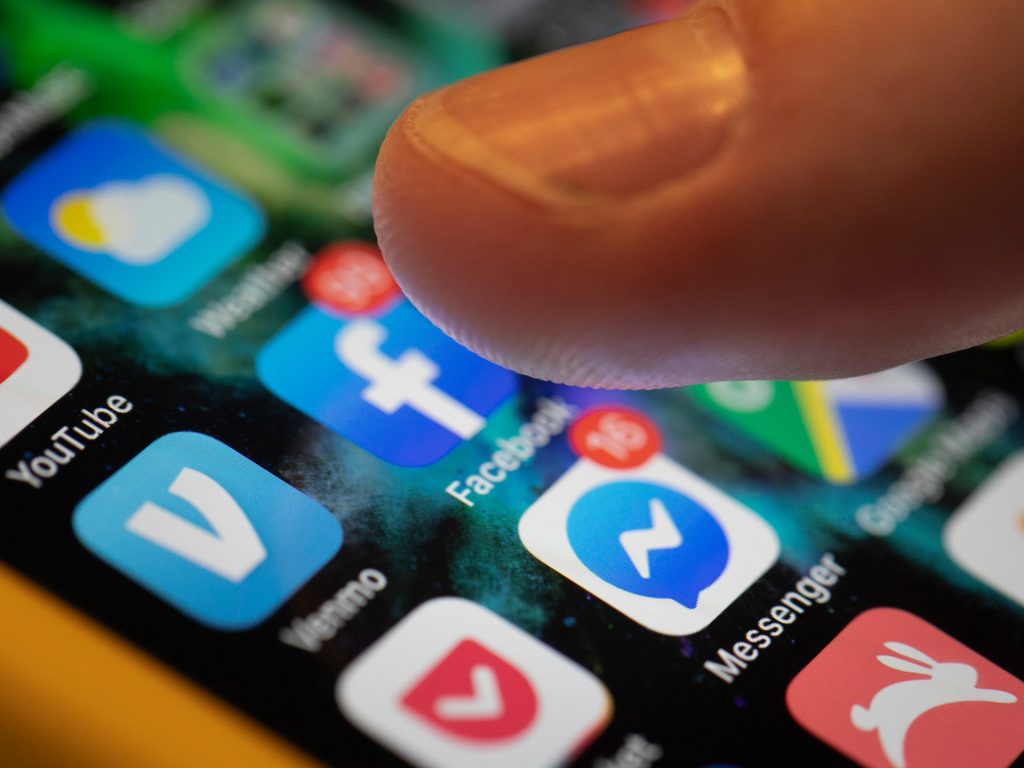
Move comes as a growing number of countries are rolling out measures to limit children’s exposure to digital platforms. By Reuters Published On 24 Nov 202524 Nov 2025 Click here to share on social media share2 Share Malaysia plans to ban social media for users under the age of 16 starting from next year, joining a growing list of countries choosing to limit access to digital platforms due to concerns about child safety. Communications Minister Fahmi Fadzil said on Sunday the government was reviewing mechanisms used to impose age restrictions for social media use in Australia and other nations, citing a need to protect youths from online harms such as cyberbullying, financial scams and child sexual abuse. Recommended Stories list of 4 itemsend of list “We hope by next year that social media platforms will comply with the government’s decision to bar those under the age of 16 from opening user accounts,” he told reporters, according to a video of his remarks posted online by local daily The Star. The effects of social media on children’s health and safety have become a growing global concern, with companies including TikTok, Snapchat, Google and Meta Platforms – the operator of Facebook, Instagram and WhatsApp – facing lawsuits in the United States for their role in driving a mental health crisis. In Australia, social media platforms are poised to deactivate accounts registered to users younger than 16 next month, under a sweeping ban for teenagers that is being closely watched by regulators around the world. France, Spain, Italy, Denmark and Greece are also jointly testing a template for an age verification app. Malaysia’s neighbour Indonesia said in January it planned to set a minimum age for social media users, but later issued a less stringent regulation requiring tech platforms to filter negative content and impose stronger age verification measures. Advertisement Malaysia has put social media companies under greater scrutiny in recent years in response to what it claims to be a rise in harmful content, including online gambling and posts related to race, religion and royalty. Platforms and messaging services with more than eight million users in Malaysia are now required to obtain a license under a new regulation that came into effect in January. Adblock test (Why?)
Gunfire, explosions at paramilitary HQ in Pakistan’s Peshawar: Reports

DEVELOPING STORYDEVELOPING STORY, Gunmen, suicide bomber attacks the Federal Constabulary headquarters in Peshawar, media reports say. Published On 24 Nov 202524 Nov 2025 Click here to share on social media share2 Share Gunmen and at least one suicide bomber have attacked a paramilitary force headquarters in Pakistan’s northwestern city of Peshawar, according to media reports. The Dawn daily reported on Monday that the headquarters of the Federal Constabulary (FC) was “under attack” and that a suicide bomber had detonated their explosives at the gate to the complex. Recommended Stories list of 4 itemsend of list The daily cited police and security sources in Peshawar. It cited the sources as saying that three fighters had been killed and that security forces had cordoned off the area. It added that three FC officers were killed in the attack and that two others were wounded. The Reuters news agency reported that the complex was hit by two suicide bombers and that at least three people had been killed. “The first suicide bomber first carried out an attack on the main entrance of the constabulary, and the other one entered the compound,” a senior official who spoke on condition of anonymity was quoted as saying. “Law enforcement personnel, including the army and police, have cordoned off the area and are carefully handling the situation as we suspect there are some terrorists inside the headquarters,” the official added. The headquarters of the force is located in a crowded area, close to a military cantonment. Adblock test (Why?)
Snapchat starts age checks in Australia ahead of teen social media ban

Snapchat has begun asking children and teenagers in Australia to verify their ages, including with software owned by the country’s banks, according to a company spokesperson. The move on Monday comes as Australia prepares to enforce a world-first social media ban for children under the age of 16 starting on December 10. Recommended Stories list of 4 itemsend of list The law, which threatens social media platforms with a fine of up to 49.5 million Australian dollars ($31.95m) for noncompliance, is one of the world’s toughest regulations targeting Big Tech. In addition to Snapchat, the ban currently applies to YouTube, X, Facebook, Instagram, TikTok, Reddit, Twitch and Kick. In a statement on Saturday, Snapchat said users will be able to verify their age through the ConnectID application, which links to their bank accounts, or by using software owned by Singapore-headquartered age-assurance provider, k-ID. ConnectID, which is owned and used by most major Australian banks, said it would send the tech platform a “yes/no” signal about whether the person was over 16 based on their account details, without making them upload sensitive information. “The goal here is to protect young people online without creating new privacy risks,” said ConnectID managing director Andrew Black in a statement. In the k-ID option, users can upload government-issued identification cards to verify their ages or submit photos, which the application will then use to estimate an age range. ‘Keep lines of communication open’ Snapchat has previously said it believes about 440,000 of its users in Australia are aged between 13 and 15. Advertisement Snapchat added that it “strongly disagreed” with the Australian government’s assessment that it should be included in the social media ban, claiming its service provides a “visual messaging app”. “Disconnecting teens from their friends and family doesn’t make them safer – it may push them to less safe, less private messaging apps,” it warned. Some other apps have been able to secure an exception from the ban, including Discord, WhatsApp, Lego Play and Pinterest. But Australian authorities have reserved the right to update the list of banned platforms as required. A number of young people and advocates have expressed concerns about the potential consequences of the new ban, including 18-year-old journalist and founder of youth news service 6 News Australia Leo Puglisi, who told an Australian Senate inquiry that the ban will affect young people’s access to information. UNICEF Australia has also expressed concerns about implementation, saying the changes proposed by the Australian government “won’t fix the problems young people face online”. “Social media has a lot of good things, like education and staying in touch with friends,” UNICEF Australia said in a statement. “We think it’s more important to make social media platforms safer and to listen to young people to make sure any changes actually help.” Katrina Lines, the CEO of children’s therapy provider Act for Kids, said that parents should start having conversations with children as soon as possible about how they can stay connected as the ban comes into effect over the coming weeks. “It’s important to keep the lines of communication open in the lead up to and even long after these changes take effect,” Lines said. Act for Kids said it surveyed more than 300 Australian children aged 10 to 16, and found 41 percent would prefer to connect with family in real life compared to only 15 percent who preferred to spend time online. But Lines said families still need to work out how to improve in-person connections. “One way of starting this conversation could be by asking them how they would like to stay connected to friends and family outside of social media,” she said. Global concern The Australian ban comes amid growing global concern over the effects of social media on children’s health and safety, and companies including TikTok, Snapchat, Google and Meta Platforms – the operator of Facebook, Instagram, and WhatsApp – are facing lawsuits in the United States for their role in fuelling a mental health crisis. Regulators around the world are closely watching whether Australia’s sweeping restrictions can work. Advertisement Malaysia’s Communications Minister Fahmi Fadzil said on Sunday that the Malaysian government also plans to ban social media for users under the age of 16, starting from next year. He said the government was reviewing the mechanisms used in Australia and other nations to impose age restrictions for social media use, citing a need to protect youths from online harms such as cyberbullying, financial scams and child sexual abuse. “We hope by next year that social media platforms will comply with the government’s decision to bar those under the age of 16 from opening user accounts,” he told reporters, according to a video of his remarks posted online by local daily The Star. In New Zealand, Prime Minister Christopher Luxon is also planning to introduce a similar bill to restrict children’s social media use, while Indonesia, too, has said it is preparing legislation to protect young people from “physical, mental, or moral perils”. In Europe, France, Spain, Italy, Denmark and Greece are jointly testing a template for an age verification app, while the Dutch government has advised parents to forbid children under 15 from using social media apps like TikTok and Snapchat. Adblock test (Why?)

